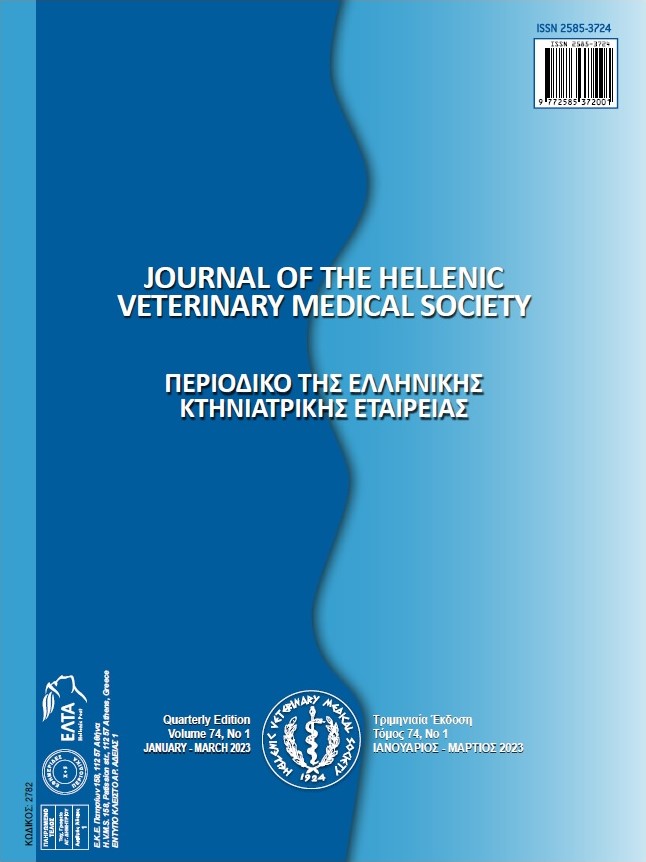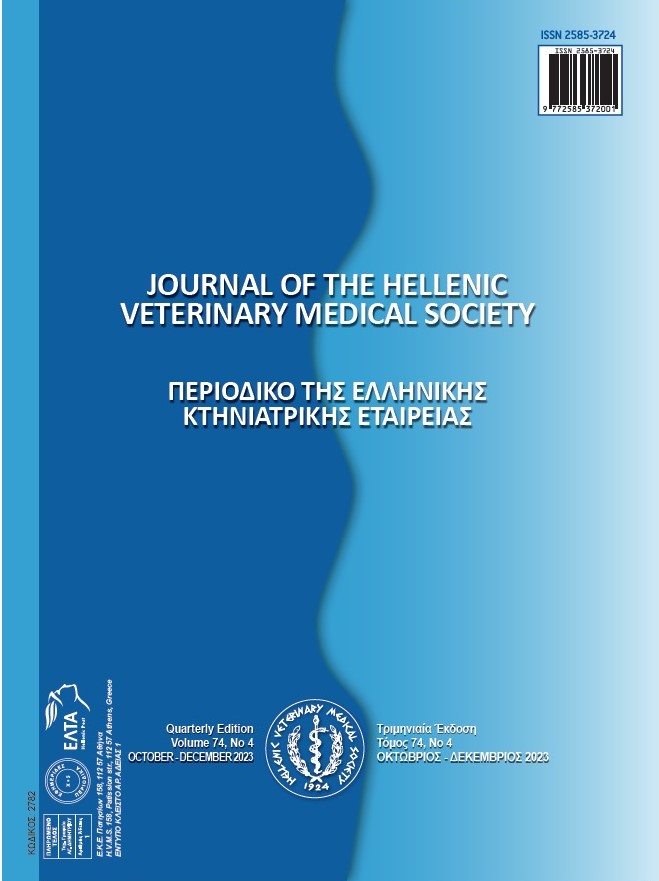Proliferative and necrotizing otitis externa in a kitten: Case report with literature review

Abstract
Proliferative and necrotizing otitis externa (PNOE) is a rare dermatitis with unknown etiology affecting kittens between 2 to 6-months-old and adult cats. Its clinical signs are unique and diagnosis is based on skin histopathology. Lesions develop rapidly and in kittens may regress spontaneously. A 6.5-month-old, male, Siamese kitten was presented with chronic proliferative, erythematous and necrotic lesions covered with thick dark-brown keratinous debris on the concave aspect of both pinnae and the vertical ear canal leading to secondary otitis infection due to obstruction. Lesions were not pruritic or painful even though erosions and ulceration were seen focally. Previous treatment with commercial otic preparations was of no avail. Ear otoscopy could not be performed due to stenosis and ear canal cytology showed numerous bacteria intermingled with keratinocytes and debris. Radiography further confirmed ear canal stenosis. Histopathological examination revealed orthokeratotic and parakeratotic hyperkeratosis, epidermal hyperplasia with several apoptotic cells and neutrophilic crusts mixed with cocci. Topical treatment with 0.1% tacrolimus was prescribed twice daily and otic solutions for secondary otitis externa. Complete clinical cure was achieved two months after first admittance. This is the first report of PNOE in Greece. Topical tacrolimus appears to be an effective treatment for lesions that do not spontaneously regress.
Article Details
- How to Cite
-
Bouza- Rapti, P., Psalla, D., Baka, R., & Farmaki, R. (2023). Proliferative and necrotizing otitis externa in a kitten: Case report with literature review. Journal of the Hellenic Veterinary Medical Society, 74(1), 5485–5490. https://doi.org/10.12681/jhvms.29526 (Original work published April 12, 2023)
- Issue
- Vol. 74 No. 1 (2023)
- Section
- Case Report

This work is licensed under a Creative Commons Attribution-NonCommercial 4.0 International License.
Authors who publish with this journal agree to the following terms:
· Authors retain copyright and grant the journal right of first publication with the work simultaneously licensed under a Creative Commons Attribution Non-Commercial License that allows others to share the work with an acknowledgement of the work's authorship and initial publication in this journal.
· Authors are able to enter into separate, additional contractual arrangements for the non-exclusive distribution of the journal's published version of the work (e.g. post it to an institutional repository or publish it in a book), with an acknowledgement of its initial publication in this journal.
· Authors are permitted and encouraged to post their work online (preferably in institutional repositories or on their website) prior to and during the submission process, as it can lead to productive exchanges, as well as earlier and greater citation of published work.





